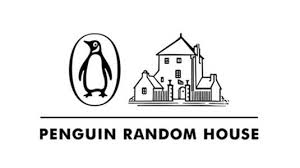The Penguin/Random House Merger – 6 Months Later
Most headlines about the recent Penguin Random House merger have been positive. Some, however, like the aforementioned “And Then There Were Five,” have a slightly morbid ring to them. This particular headline describes the number of “big” book publishers left after the merger occurred. There are always questions about whether a merger like this is caused by financial necessity and questions about the ongoing viability of the company once it is merged. Six months have passed since the merger between these two companies, and things are looking bright so far. Here, I’ll look at a few aspects of the ongoing changes of the new Penguin Random House.
Penguin and Random House didn’t just come together in the United States; they also merged in Canada, the UK, Australia, New Zealand, India, China, South Africa, Spain, Mexico, Argentina, Colombia, Uruguay, and Chile. Penguin Random House continues to merge sections of the company and buy out portions that were previously owned by other publishers. In November, Random House Mondadori was renamed Penguin Random House Grupo Editorial. The new name represents its position and identity as the Spanish-language publishing company of the newly formed Penguin Random House. In India, Penguin Random House has now taken 100 percent ownership of Penguin India over the 55 percent they owned previously. In December, Penguin Random House announced its purchase of Times Media Group’s majority stake in South Africa-based Random House Struik. In the UK, Penguin and Random House publishers have decided to merge their children’s divisions into one entity.
In terms of e-books, Penguin Random House comes out as number two in the ranking in 2013, although if one adds up their numbers from the first half of the year (before the merger), they come out far ahead of the number one company. Here’s a look at the rankings:
| Rank | Publisher | Appearances |
| 1 | Hachette | 258 |
| 2 | Penguin Random House | 230 |
| 3 | Random House | 146 |
| 4 | Penguin | 102 |
| 5 | Self-published | 99 |
| 6 | HarperCollins | 91 |
| 7 | Simon & Schuster | 72 |
| 8 | Macmillan | 68 |
| 9 | Amazon | 46 |
| 10 | Scholastic | 27 |
Since the merger, Penguin Random House has been expanding their presence online in various ways—and not just by being one of the top e-book sellers. Firstly, the company is taking part in a business competition that challenges small companies to analyze how their digital content is consumed. The contest invites entrants to find creative solutions for digital strategies across three themes: retail, events, and analytics. Another way Penguin Random House is becoming more visible online is by partnering with Pinterest to help readers connect with books digitally. Through the partnership, Random House is adding a Pinterest API to its website and will feature the social network’s current popular pins related to books on the front page of Randomhouse.com. The idea is to help site visitors discover new books and to increase the number of readers pinning books.
What does Penguin Random House have to say about the weeks since the merger? In a January 19 interview with the Economic Times magazine, John Makinson answered questions about how the company is doing since the merger. According to Makinson, the months since the merger have been “fairly quiet. We were very deliberate in the way we brought these companies together. We wanted to ensure it was not disruptive to authors, agents, and booksellers.” In response to whether this merger was a question of survival he said, “No, not at all. Penguin and Random House were the biggest and most profitable publishers in the world…The pace of change in our industry is very rapid and we need to think of the impact of companies like Google, Apple, and Amazon and how they disintermediate publishers.”
So there you have it, from the chairman himself, as well as from various other sources. Penguin Random House is thriving in the months since the merger. They are taking global control of all aspects of their business, their presence online is expanding, and they are at the top of the e-book charts. It will be interesting to see if this success affects the other four “big” publishing companies. Will we see other “big” mergers happening in the future?

